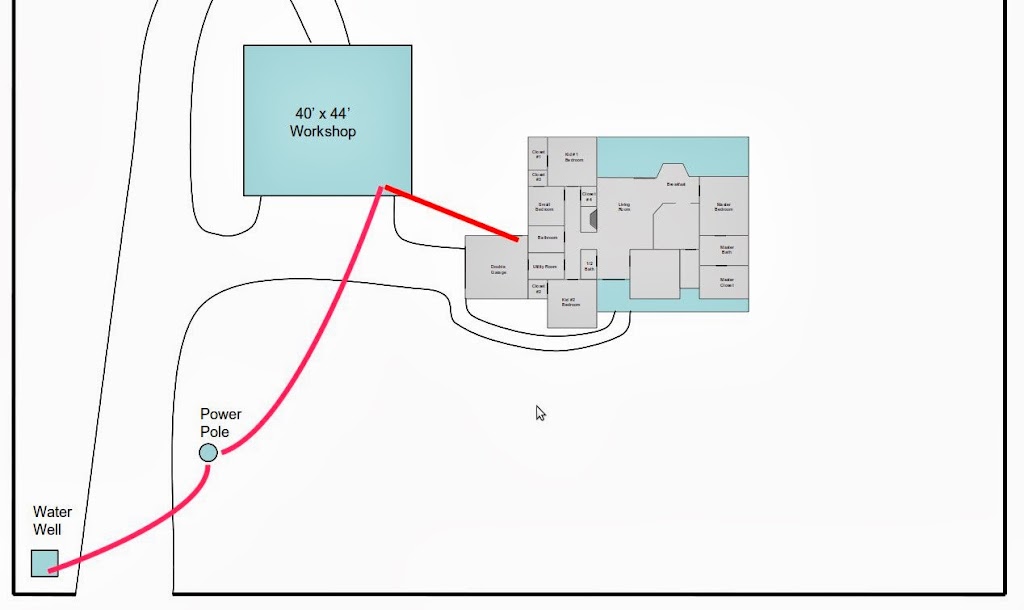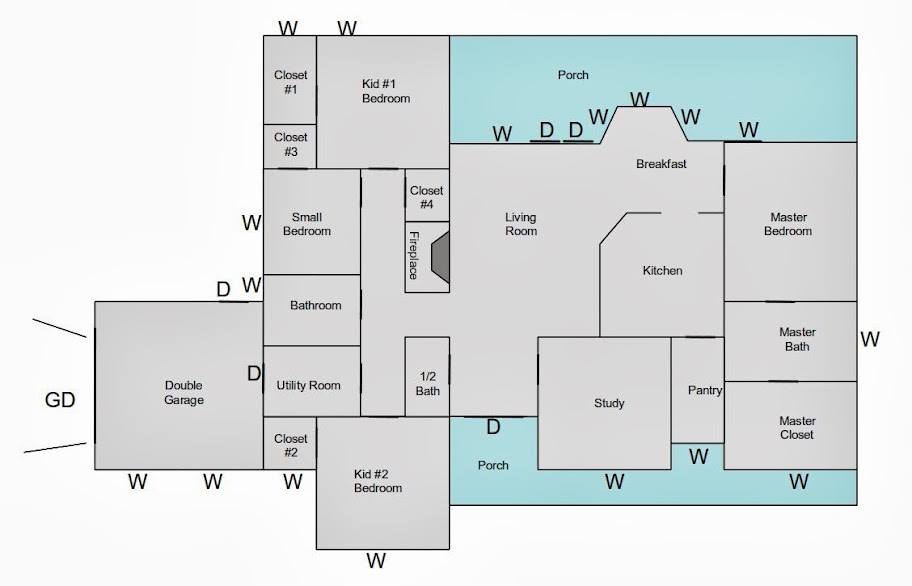I have been lingering around but have realized that I need some starting points so I am more efficiently use my time on getting to the best solution. I have the feeling I can get lost in this matter quickly and reading all your posts gives me a great comfort that I can actually make this happen.
Here is an overview of my project.

I have an existing barn that has a workshop with restroom and little kitchen. This is built already and I pre-wired all windows and doors, I also ran wires for glass break and heat & smoke sensors. But have not decided on the system yet. I planted an empty conduit when I ran the power from the power pole, this is 150 ft away. An additional 50 ft will get me to the water well house (no empty conduit there).
We are in the final stages of permitting our house. We estimate to break ground in two to three weeks. The house will get connected to the barn via conduit as well to tie security and cameras together for both.
This brings me to what I want to achieve:
Here is a view of the house. Simple structure. I want to terminate everything in a closet (labeled #4) in the hall way. Anything I need to consider for this closet? What power will all this take so I can ask for right cable gauge?

I marked the windows (W) and Doors (D). Would someone please recommend what sensors I need to place and where? I also would like to see the cable requirements for each sensor. I noticed there is a good document out there for cabling 101. Maybe someone can suggest how to tie certain sensors together, a logic of how to do this.
Any other comments or pointers?
Again - I could spend hours just reading these post here, this is great info but I realize that I need to start focusing my efforts. I understand you guys do this to help out fellow enthusiasts and I really appreciate your time and support.
Here is an overview of my project.

I have an existing barn that has a workshop with restroom and little kitchen. This is built already and I pre-wired all windows and doors, I also ran wires for glass break and heat & smoke sensors. But have not decided on the system yet. I planted an empty conduit when I ran the power from the power pole, this is 150 ft away. An additional 50 ft will get me to the water well house (no empty conduit there).
We are in the final stages of permitting our house. We estimate to break ground in two to three weeks. The house will get connected to the barn via conduit as well to tie security and cameras together for both.
This brings me to what I want to achieve:
- Security cameras that overlook the property. Starting at the water well house or the power pole to see who is coming. Cameras on all corners of the house & barn, probably 6 as a minimum or 8 for better coverage. Not sure about cameras on the inside, I don't like to be recorded.... any thoughts?
- My property goes 900 ft to the back, no power there except solar (12V > 24VAC) for a sprinkler system. I'd love to see a thought on how I could tie in a camera back there. But this is not my current priority.
- I'd like to record the cameras on action, either movement or some other trigger. We have a lot of deer crossing the property, I do not want to get too many false alarms. I will fence in around approx. 40 ft around the house for the dogs and hope this keep the deer away. This perimeter is my main concern and is what I want to get secured.
- Security System, general sensor packages; doors, windows, movement, glass break, heat, smoke & carbon monoxide. I like to have all tied together so I know if the door in the barn is still open or a window is open in the house.
- I like to get some kind of alarm when vehicles drive down the drive way. This could be triggered by a camera but I think a more vehicle-triggered-device (maybe like traffic light inductive sensors) may be better. I just don't know what I could use here.
- Cameras & Security is my main concern, home automation may be a nice icing on the cake. I like to tie automation into the security by switching lights at various times when we are away. I am not crazy about open/close blinds or perform other trivial tasks. Lights and maybe temperature settings is just fine. But who knows what I want in the future...
- I want to self monitor, I have neighbors that are always there. So a loud siren is just fine. I will have shortly high speed internet and good cell phone coverage. I think about backing up the internet with a cell phone line.
Here is a view of the house. Simple structure. I want to terminate everything in a closet (labeled #4) in the hall way. Anything I need to consider for this closet? What power will all this take so I can ask for right cable gauge?

I marked the windows (W) and Doors (D). Would someone please recommend what sensors I need to place and where? I also would like to see the cable requirements for each sensor. I noticed there is a good document out there for cabling 101. Maybe someone can suggest how to tie certain sensors together, a logic of how to do this.
Any other comments or pointers?
Again - I could spend hours just reading these post here, this is great info but I realize that I need to start focusing my efforts. I understand you guys do this to help out fellow enthusiasts and I really appreciate your time and support.
